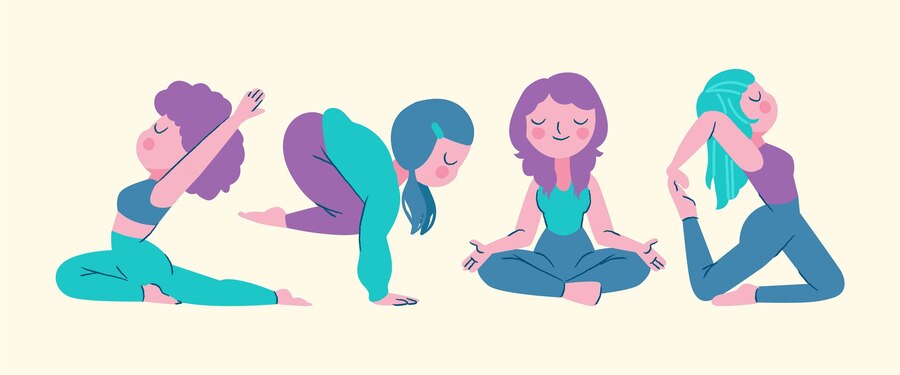Sciatica pain, characterized by pain radiating along the sciatic nerve from the lower back to the legs, can be debilitating. Traditional treatments often include medication, physical therapy, and in severe cases, surgery. Yoga offers a holistic and natural approach to managing sciatica pain by improving flexibility, strengthening muscles, and promoting relaxation.
Understanding Sciatica Pain
-
Causes of Sciatica:
-
Sciatica can be caused by a variety of issues, including herniated discs, spinal stenosis, piriformis syndrome, and degenerative disc disease. It results in pain, numbness, and tingling sensations along the sciatic nerve path.
-
-
Symptoms:
-
Common symptoms include lower back pain, pain in the buttocks or leg that worsens with prolonged sitting, and a burning or tingling sensation down the leg.
-
Benefits of Yoga for Sciatica Pain
-
Improved Flexibility:
-
Yoga poses that focus on stretching the hamstrings, lower back, and hips can help alleviate the pressure on the sciatic nerve. Improved flexibility can reduce pain and prevent future flare-ups.
-
-
Muscle Strengthening:
-
Strengthening the core, lower back, and leg muscles through yoga can provide better support for the spine, reducing sciatic pain. Stronger muscles help distribute weight more evenly, minimizing stress on the sciatic nerve.
-
-
Enhanced Posture:
-
Poor posture can exacerbate sciatica pain. Yoga promotes awareness of body alignment and posture, helping to maintain a healthy spine and reduce sciatic nerve compression.
-
-
Stress Reduction:
-
Stress and tension can worsen sciatica pain. Yoga incorporates breathing exercises and meditation, which promote relaxation and reduce stress levels, indirectly alleviating pain.
-
Effective Yoga Poses for Sciatica Pain
-
Child's Pose (Balasana):
-
This gentle stretch helps elongate the lower back and relieve tension. Kneel on the floor, sit back on your heels, and stretch your arms forward while resting your forehead on the ground.
-
-
Pigeon Pose (Eka Pada Rajakapotasana):
-
Pigeon pose stretches the hip rotators and flexors, which can help reduce sciatic pain. From a downward-facing dog position, bring one knee forward and place it behind your wrist, extending the opposite leg back.
-
-
Cat-Cow Pose (Marjaryasana-Bitilasana):
-
This pose helps improve spinal flexibility and relieve lower back tension. Alternate between arching your back (cow pose) and rounding it (cat pose) while on your hands and knees.
-
-
Supine Twist (Supta Matsyendrasana):
-
A gentle twist can help relieve tension in the spine and lower back. Lie on your back, bend your knees, and gently drop them to one side while keeping your shoulders on the ground.
-
-
Bridge Pose (Setu Bandhasana):
-
Bridge pose strengthens the lower back and glutes, providing better support for the spine. Lie on your back, bend your knees, and lift your hips while pressing your feet into the ground.
-
Incorporating Yoga into Your Routine
-
Consistency:
-
Regular practice is key to experiencing the benefits of yoga for sciatica pain. Aim for at least 3-4 sessions per week, incorporating both stretching and strengthening poses.
-
-
Listen to Your Body:
-
Pay attention to how your body responds to each pose. Avoid pushing through pain and modify poses as needed to prevent further injury.
-
-
Seek Professional Guidance:
-
Consider working with a certified yoga instructor, especially if you are new to yoga or have severe sciatica pain. An instructor can help tailor poses to your specific needs and ensure proper alignment.
-
Yoga offers a holistic approach to managing sciatica pain through improved flexibility, muscle strengthening, enhanced posture, and stress reduction. By incorporating specific yoga poses into their routine, individuals can experience relief from sciatic pain and improve their overall well-being.




